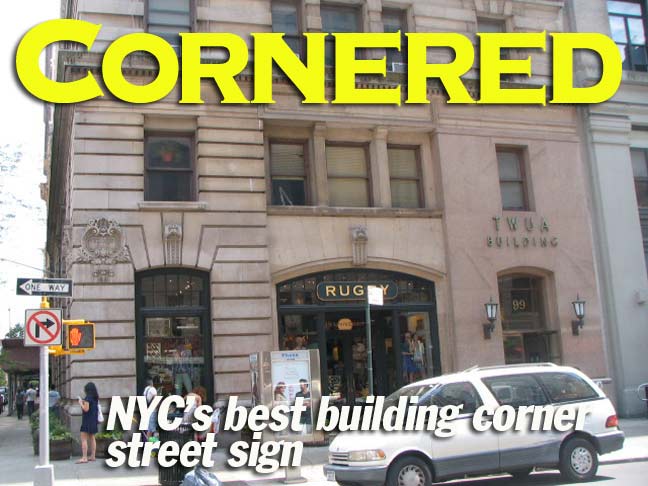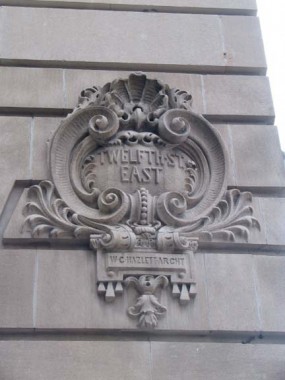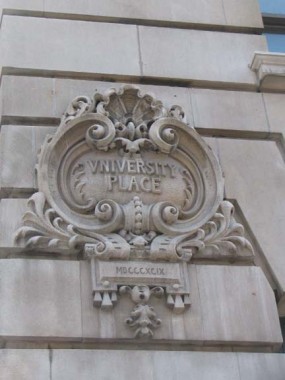University Place fills a north-south street slot between Broadway and 5th Avenue from the east side of Washington Square and the west side of Union Square. It could be thought of as a northern extension of Wooster Street (which it originally was), or a Madison Avenue South, but the street has been called University Place since 1838, the year after New York University erected its first structure in the East Village (check this 1858 map); NYU had been expanding its presence there ever since.
The building at the SE corner of University Place and East 12th Street, #99, is the Textile Workers Union of America Building. The TWUA was founded in 1939 and merged with the Amalgamated Clothing Workers of America to form the Amalgamated Clothing and Textile Workers Union in 1976. At present the TWUA’s locals are part of UNITE HERE!, a manufacturing and hospitality workers union.
The store on the ground floor, Rugby, is a Ralph Lauren outfit; since your webmaster has mainly shopped for duds at K-Mart and Robbin’s Mens and Boys, I’ll leave it to the NY Times to describe the interior:
In the display windows of Rugby, the new Ralph Lauren outpost on University Place, there is a framed photograph of the Styvechale Hockey Club… Their minds may have been elsewhere, but I feel safe in betting that none of the men in the photograph – not young T. N. Woodward, nor A. H. Jephcott, nor C. W. Clarke – ever imagined that long after they were dead their hockey club picture would be used to sell cashmere-blend tube-top sweaters to teenagers.
Anyway, I’m here to show you the two magnificent cartouches on the north and west sides of the building. The University Place side continues the classical and medieval practice of carving a V instead of a U. The Latin alphabet, if I’m not mistaken, had the U, but not the V, and the U stood in for both the V and the sound the W would make (the W wasn’t invented till the medieval era), Ancient carvers simply used the V shape to save time, or so the story goes. Phrases like ueni, uidi, uici were pronounced wenny, widdy, wicki; Church usage later turned the u to the familar fricative v sound, and softened the “ci” to “chee.”
The cartouches also provide some handy dandy information: the name of the architect, W(illiam) C. Hazlett, and the year of construction, MDCCCXCIX, or, as we put it, 1899. I can’t find much on Hazlett online but I gather he was quite active in the years either side of 1900.
Wouldn’t it be great if every building had this kind of information posted on the exterior?
Page completed May 27, 2010



